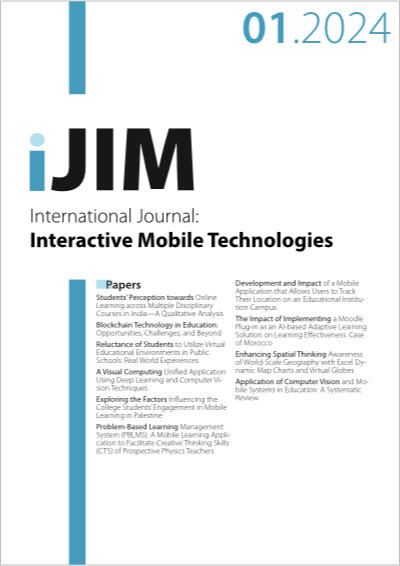Enhancing Spatial Thinking Awareness of World-Scale Geography with Excel Dynamic Map Charts and Virtual Globes
DOI:
https://doi.org/10.3991/ijim.v18i01.45971Keywords:
spatial thinking, virtual globe, excel dynamic map chart, geographyAbstract
Spatial thinking is a unique thinking skill that geographers use to reason. Every individual is believed to have this thinking skill, but not all are aware of it. This condition causes differences in the development of each person. A person’s spatial thinking can be improved by training. Geospatial technology is a representation tool that many people believe can be used to train spatial thinking skills. However, not many people encounter obstacles when using this technology. The complexity of the command to run is an obstacle that is often found. In line with the development of geospatial technology, many applications integrate this technology as part of visualization tools. This teaching and learning were conducted with Action Research Classroom (three cycles) in the form of Project-Based Learning with Science, Engineering, Technology, and Mathematic (STEM) approach. This article discusses the findings of the research on the use of Excel dynamic map chart and virtual globe to improve spatial thinking in research subjects with the case study of Indonesian Geography and World Regional Geography. With the Excel application project, for the context of upper-level education, the findings show an increase in spatial thinking skills and mastery of the use of mapping platforms without the need for prior experience of coding, software, or cartography, although it needs to be corroborated by other studies.
Downloads
Published
How to Cite
Issue
Section
License
Copyright (c) 2023 Purwanto, Irene Mega Mellyana, Tan Geok Chin Ivy

This work is licensed under a Creative Commons Attribution 4.0 International License.



